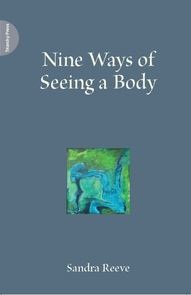The Ecological Body
The ecological body is one of nine 'ways of seeing a body' identified by movement artist and teacher Sandra Reeve. In many ways it mirrors the more systemic, networked, horizontal ways of viewing an organisation espoused by other Triarchy authors. (Movement, here, means non-stylised movement in a form originally developed by Javanese movement artist Suprapto Suryodarmo and called Amerta Movement.) "The ecological body takes movement as the basic default, with ‘stillness’ or ‘stopping’ as pauses in the line of movement... this is a key factor, offering a perception of the world that is utterly different from the one that we are generally accustomed to. Even in a fixed position there is still the movement of our breathing or of our circulation, so, in fact, like the rest of the natural world, we are constantly in change or in some kind of transition. In absolute terms, there is no such thing as a fixed ‘position’ because there is always movement. However, within a comparative framework, the kinaesthetic emphasis in Western daily life is on one’s position, on goals and on structure rather than paying attention to transition: that is to process, to the journey or to the spaces between activities. To redress the balance, I point to transition... If I take ‘stopping’ as the basic default, I may be unconsciously looking at life from the viewpoint of death, which is the only time we do, in fact, stop moving. A stopping point becomes the reference point for the sequence of movement preceding it. The tendency is to look back to see how someone can ‘improve’ what they just did. Taking ‘change’ as home ground suggests an approach to life that acknowledges the potential for transformation, or ‘blossoming’: a term used by Suryodarmo in Joged Amerta. In practical terms, this means that when I watch someone move, I am looking to support their full potential in movement, as it is happening, to expand their choices, rather than looking back to see what they cannot do. Secondly, in my perception, movement is inextricably linked to the body, to the environment, to change and to the expression of life or being alive. It is a constant, a continuity that underlies the process of living and therefore difficult to define except, perhaps, by its absence. I have referred to evolutionary movement and to child developmental movement. These systems, based on neurobiology and psychology, correspond to the evolution of the species and the individual respectively. At the death of an organism, movement ceases. Movement has traditionally been more connected to an image of the body than to an image of mind, and therefore suffers the same prejudices as the mechanistic body suffered through the postulation of a body/mind split: movement, in this dualistic context, has generally been seen as a vehicle for the expression of the mind/spirit. As a result of this prevalent attitude, movement becomes something we do rather than something we are. However, returning to my earlier distinction, there are practices that see movement from the point of view of the body and that see movement as inherently meaningful, rather than looking for the psychology or story that a movement sequence is revealing. When I listen to music, I am not necessarily seeking meaning, but nevertheless in the process of listening, the music has meaning for me. It is the same with watching the moving body. Third, my notion of the ecological body is based on the hypothesis that such a body perceives the moving world through movement and experiences itself as one part of a changing situation. As an ecological body engaged in ecological movement, I am aware of the effect that my movement is having on others and on the environment itself, and how they are conditioning my movement. Habitual characteristics and tendencies become apparent in my movement patterns: they are the movements which repeat themselves through changing environments. With awareness, I contend, these can be accepted and then transformed by adopting new movement preferences or releasing the tension of a particular pattern and seeing what movement arises. Finally, by moving in natural environments, ecological movement helps people to expand their embodied awareness to include the broader context from a position of ‘being among’, rather than ‘being central to’. From that position they may experience their own system as an intrinsic part of a wider set of systems and act accordingly, rather than perpetuating an attitude of ‘using’ the environment. Ecological dynamics, dynamics that touch certain nodal points, where human movement interrelates with the environment through time, are the foundation stone of ecological movement practice. These include active/passive, proportions in motion, transition/position and point, line and angle as ways of working. The intention is to foster an attitude of biocentric equality through movement, through embodied experiences of ‘interbeing’. Biocentric equality is the notion that all things have an equal right to live and to fulfil their particular potential. By rediscovering the flow of environment, rather than the environment as a succession of places, and by challenging our addiction to ‘doing’ at the expense of our experiencing our ‘being’ in the world, there is a chance that we can give value to our selves and to our life stories as part of a profoundly interrelated network of beings. An ecological body is situated in flux, participation and change. The changing body/soma experienced through movement as part of the changing environment challenges any fixed and deterministic notion of self and stimulates a different sense of self as process, participating in the movement of life." References: Sandra Reeve's Move into Life |
Explore |


